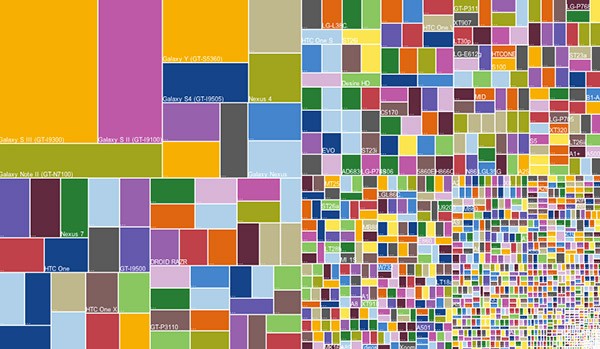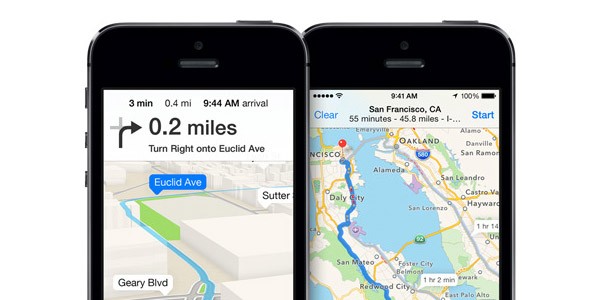Are you getting started with mobile design? Any designer who's had the opportunity to design for mobile devices as well as desktop computers knows that mobile design is a one of a kind discipline. You'll find challenges unique for mobile. In this introductory article, I'd like to take a look at some of the attributes that make mobile unique.
It's no secret that thinking about a product's design makes for a better product. This doesn't solely relate to aesthetics as design also influences how a product's functionality and how the user interacts with it. Design choices have a distinct influence on usability and user experience. When you start out as a mobile designer or developer, it's your responsibility to make the product not only work for you, but also for its target audience.
A Smaller Screen
The most obvious difference compared to other types of digital design is that we have a limited space to work with. Smartphones come in many forms and flavors and there's a lot of variety in screen sizes. Offering a similar experience on every mobile device can be a challenge. This isn't limited to the physical screens we hold in our hands and interact with. It also spans the pixel density of those screens. There are smartphones and tablets with a low pixel density all the way up to a very high pixel density.
Even though the screen is arguably one of the most important components of a mobile device, it is just one of hundreds of components that affect the user's experience. It has therefore become close to impossible to test an application on every device on the market.

Touch & Gestures
Touch screens have the distinct capability to provide an immersive user experience. Swiping, tapping, pinching, squeezing, holding, and all kinds of other gestures can have a specific functionality depending on the application.

The power and natural interaction that touch screens provide make them more efficient to use for specific tasks. Some tasks are better suited for mobile devices than for notebooks or desktop computers. I can only encourage you to make use of the possibilities that mobile devices offer over traditional computers, but be aware that they are as challenging as they are advantageous. Not every user is familiar with a gesture-based user interface and a gesture-based user interface has its challenges, such as discoverability. If you deviate a little too much from the standards set by the operating system, the usability of your application can run the risk of becoming a nightmare for the user.
Operating Systems
At the moment, Android and iOS are the main players in the mobile space. However, there are other players, such as Microsoft's Windows Phone, Mozilla's Firefox OS, BlackBerry's BlackBerry 10, and even Ubuntu is entering the mobile market. Creating an application and making it available on the major mobile platforms is a daunting undertaking.
Every platform has its own design standards and patterns. Managing a list of items on Android is different from managing a list on iOS. Sliding menus or side menus are typical for the iOS platform and are less common in Android applications. A tab bar at the bottom of the screen was a commonly used design pattern on iOS and introduced by Apple. Many applications, however, are moving away from this pattern. Each platform defines a set of standards of how buttons and symbols look like. Users who have been using a mobile operating system for a long time have come to expect to see these standards in every application. In other words, what you create for iOS might be perceived as strange or unconventional by Android users who have grown to like and appreciate the standards set by Android.
Another interesting challenge are the various flavors of a mobile platform. Even though this isn't much of a problem for the iOS platform, the situation is quite complex on Android and often referred to as Android fragmentation. Anything you design for the latest Android release may be incompatible with an older version, potentially affecting a significant group of devices.
Think Different
In the mobile space, the question that usually arises is "How?" How do you implement certain features on a device with a smaller screen? How do you ensure that your application works as good on an iPhone as it does on an iPad? How can you communicate to your users that double-tapping the screen brings up additional options?
Applications often have a very particular goal. They usually have one main feature. This is different from, for example, desktop or web applications. This difference is reflected in how we perceive and build mobile applications. They are usually very task-oriented and have a closed structure and flow.

Developers also have access to the device's hardware features, such as the built-in camera, location services, accelerometer, etc. This can truly enrich the experience and add capabilities to an application that are only found on mobile devices.
Different Ecosystem

The mobile space in its current form is built up of a number of closed ecosystems with some ecosystems being more closed than the others. Apple is the best known example of such an ecosystem. If you want to develop iOS applications, you'll have to do business with Apple. This includes going through Apple's notorious review process. This is Apple's approach to ensure a platform with high-quality applications. This also means splitting your profits with Apple. Google is a bit less strict compared to Apple. However, this doesn't mean that Google hasn't created a closed ecosystem. You can't run your iOS applications on an Android device and vice versa. This stands in stark contrast with the web. All you need on the web is a browser.
Conclusion
The importance of mobile has increased dramatically since the introduction of the iPhone in 2007. Consumers as well as corporations understand the potential of mobile devices.
The principles of mobile first have spread all over the digital landscape. Websites have become responsive. Enterprises have started creating and using mobile applications. Games are ported to mobile platforms. As such, mobile is hot right now and the whole industry is worth billions of dollars when you consider the various players in the space, hardware manufacturers, software companies, etc. The most exciting aspect of all this is that mobile is still in its infancy.
Mobile is a complex medium. Keep learning how to become a better designer or developer, even if you're just starting out. Mobiletuts+ is excited to be part of your journey.


Comments